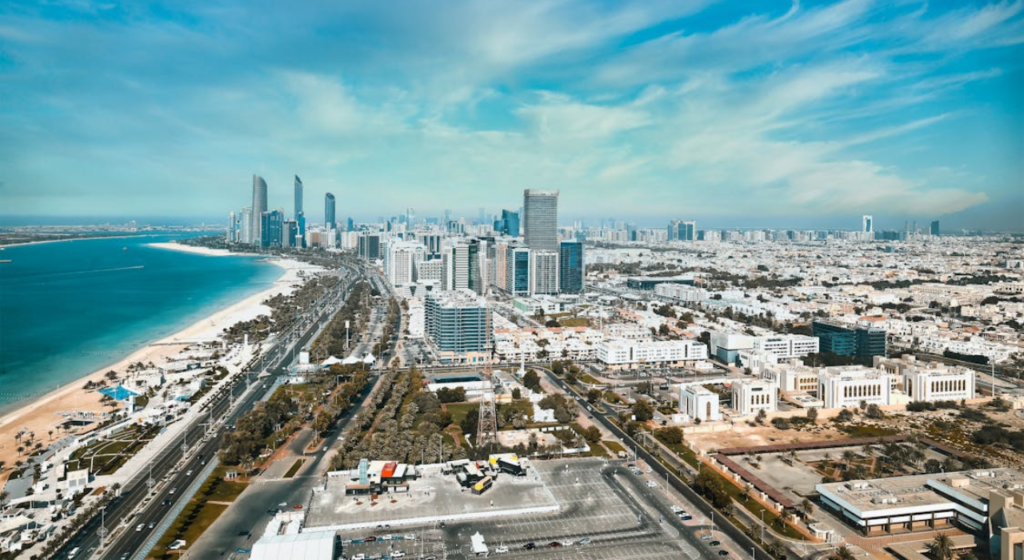The Abu Dhabi non-oil trade jump is front and center in the emirate’s economic success story. In the first half of 2025 (H1 2025), the emirate recorded a remarkable 34.7 % increase, translating to AED 195.4 billion (USD 53.2 billion) in non-oil foreign trade—up from AED 145 billion in H1 2024
This dramatic Abu Dhabi non-oil trade jump reflects a powerful wave of growth in exports, imports, and re-exports, proving beyond doubt that the UAE is winning the economy game.
Breakdown of the surge: exports, imports, re-exports
- Exports exploded by 64 %, reaching AED 78.5 billion—up from AED 47.9 billion in the same period last year
- Imports rose 15 %, climbing to AED 80 billion from AED 70 billion
- Re-exports increased 35 %, exceeding AED 36 billion versus AED 26.6 billion a year earlier
This balanced upswing across trade categories demonstrates robust external demand and internal capacity.
Why the Abu Dhabi non-oil trade jump matters
Economic diversification in action
This trade jump is a clear payoff from decades of strategic pivot away from oil toward a diversified economy, including logistics, manufacturing, tourism, aviation, and technology .
Record non-oil contribution to GDP
In 2024, Abu Dhabi’s economy grew 3.8 %, reaching a record AED 1.2 trillion. The non-oil sector contributed AED 644.3 billion—a staggering 54.7 % of GDP—and grew 6.2 % year-on-year . The H1 trade jump only amplifies this non-oil strength.
Long-term strategic planning
Ambitious industrial investments—like the AED 10 billion manufacturing drive, tourism goals of 12 % GDP share by 2030, and AI/technology investments—are paying off .
Global trade partnerships
Abu Dhabi leverages 28 Comprehensive Economic Partnership Agreements (CEPAs)—operational with nations like India, Indonesia, Israel, Turkey, and more—to expand trade access

Infrastructure & digital innovation as enablers
Smart customs systems
Abu Dhabi Customs, led by Rashed Al Mansoori, has streamlined procedures using advanced digital systems and innovations, significantly accelerating clearances and trade flows
Chairman Ahmed Jasim Al Zaabi credits this momentum to proactive planning, deployment of smart systems, and integrated services that reinforce Abu Dhabi as a key global trade node
Logistics & transport assets
Modern airports, Khalifa Port, and road infrastructure support growing cargo volumes—positioning the emirate as an efficient logistics and re-export hub .
Some reports highlight that Abu Dhabi’s non-oil trade acceleration—exceeding global trade growth by over 20-fold—is transforming it into an anchor for regional and global supply chains .
Broader indicators of trade dynamism
Certificates of origin on the rise
The Abu Dhabi Chamber of Commerce and Industry (ADCCI) recorded a 10.3 % increase in certificates of origin issued between June 2024 and June 2025, indicating more exporters and a diverse product base expanding overseas
This uptick reflects increasing private sector competitiveness, particularly among SMEs, supported through export training and matchmaking programs
What this means for investors and businesses
- Positive signal for global investors: The Abu Dhabi non-oil trade jump signals structural resilience—appealing to investors eyeing stable returns amid global uncertainty.
- Logistics and infrastructure opportunities: Demand for REITs, port operators, and supply-chain tech is rising as trade volume grows
- Smart city and digital systems focus: Technology firms can tap into Abu Dhabi’s digitisation wave in customs, mobility, AI, and infrastructure.
- Regional supply-chain expansion: More exports and re-exports open opportunities for e-commerce platforms and cross-border logistics solutions.
Looking ahead: Outlook & potential
UAE’s Dh4 trillion non-oil trade target
UAE has set a Dh4 trillion (USD 1.09 trillion) target for non-oil foreign trade by 2031. With current trends, this milestone might be met up to four years early
Sustaining the momentum
Continued improvements in infrastructure, smart policies, CEPA-driven market access, and digital transformation appear well-positioned to sustain and even accelerate growth.
Conclusion
The Abu Dhabi non-oil trade jump, rising approximately 35 % in H1 2025, is more than a figure—it’s proof that the UAE’s diversification blueprint is working. With exponential export growth, smart infrastructure, global trade partnerships, and economic reforms, Abu Dhabi is not just participating in the global economy—it’s leading it.
As trade corridors expand and non-oil sectors thrive, the question isn’t whether the UAE is winning the economy game anymore—it’s by how much more.
Do follow us: Instgaram
Read More: Nuclear’s Next Chapter: EU’s EUR241bn Investment Sparks Clean Energy Hope



